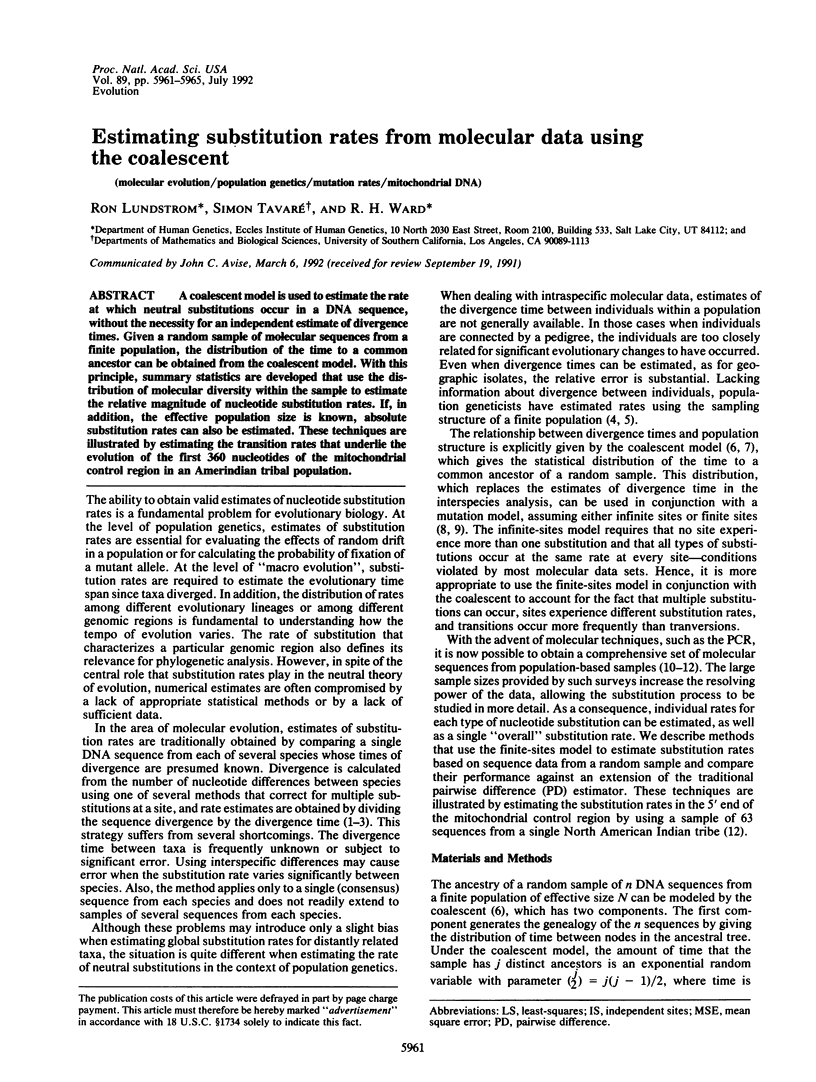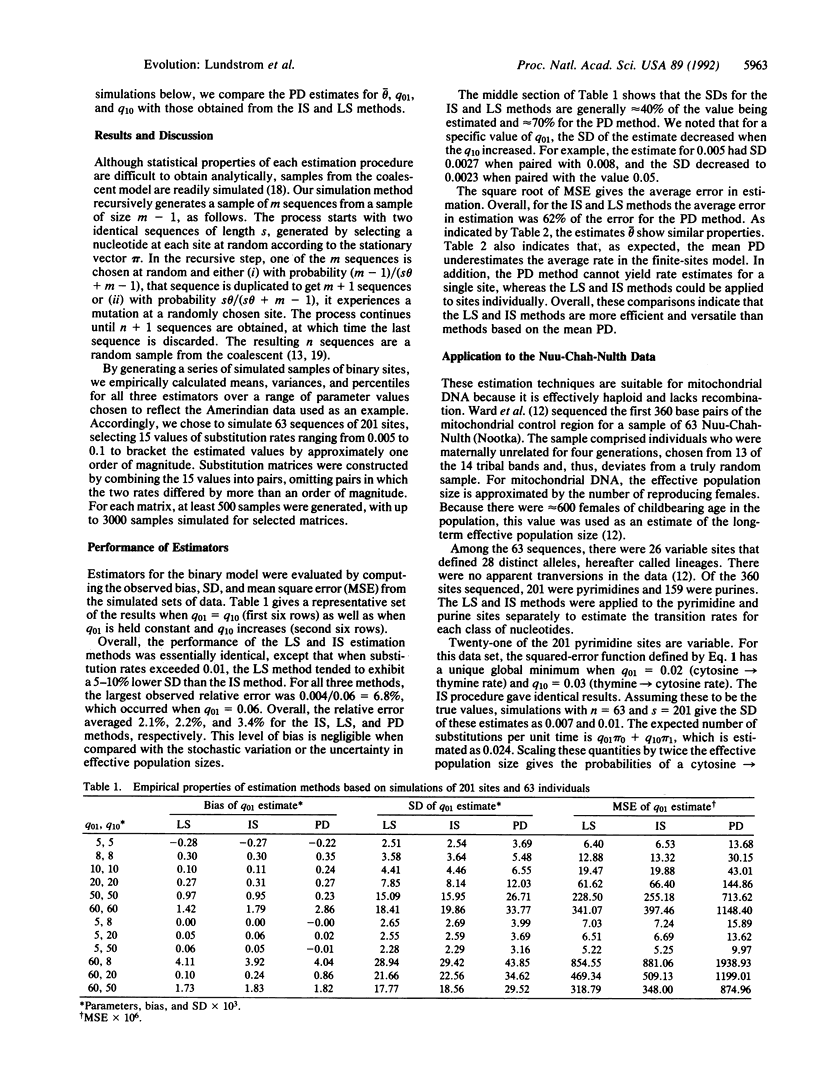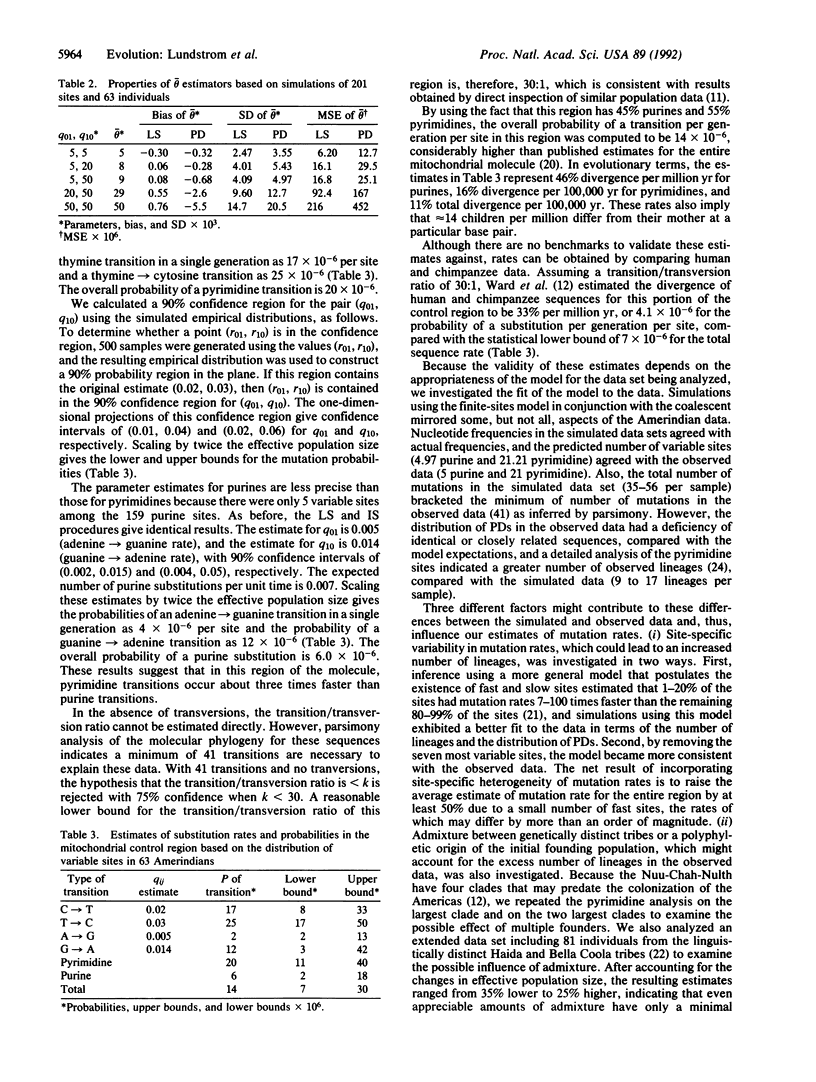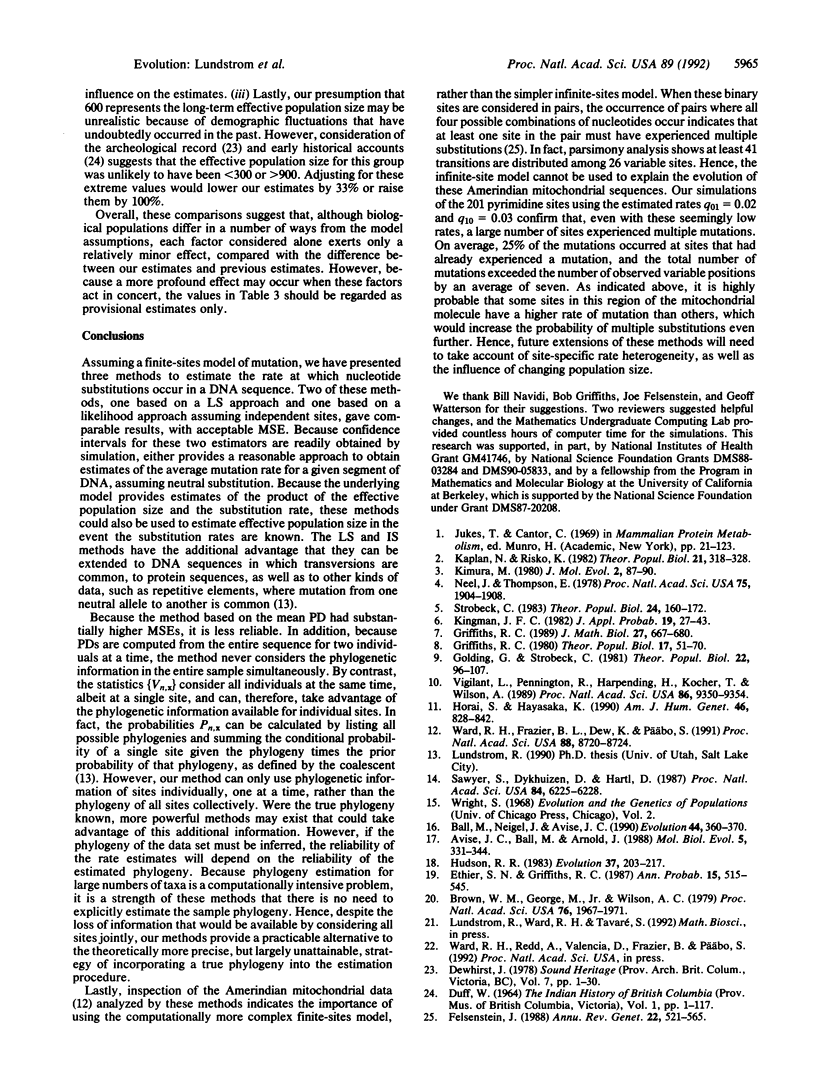Abstract
A coalescent model is used to estimate the rate at which neutral substitutions occur in a DNA sequence, without the necessity for an independent estimate of divergence times. Given a random sample of molecular sequences from a finite population, the distribution of the time to a common ancestor can be obtained from the coalescent model. With this principle, summary statistics are developed that use the distribution of molecular diversity within the sample to estimate the relative magnitude of nucleotide substitution rates. If, in addition, the effective population size is known, absolute substitution rates can also be estimated. These techniques are illustrated by estimating the transition rates that underlie the evolution of the first 360 nucleotides of the mitochondrial control region in an Amerindian tribal population.
Full text
PDF




Selected References
These references are in PubMed. This may not be the complete list of references from this article.
- Avise J. C., Ball R. M., Arnold J. Current versus historical population sizes in vertebrate species with high gene flow: a comparison based on mitochondrial DNA lineages and inbreeding theory for neutral mutations. Mol Biol Evol. 1988 Jul;5(4):331–344. doi: 10.1093/oxfordjournals.molbev.a040504. [DOI] [PubMed] [Google Scholar]
- Brown W. M., George M., Jr, Wilson A. C. Rapid evolution of animal mitochondrial DNA. Proc Natl Acad Sci U S A. 1979 Apr;76(4):1967–1971. doi: 10.1073/pnas.76.4.1967. [DOI] [PMC free article] [PubMed] [Google Scholar]
- Felsenstein J. Phylogenies from molecular sequences: inference and reliability. Annu Rev Genet. 1988;22:521–565. doi: 10.1146/annurev.ge.22.120188.002513. [DOI] [PubMed] [Google Scholar]
- Golding G. B., Strobeck C. The distribution of nucleotide site differences between two finite sequences. Theor Popul Biol. 1982 Aug;22(1):96–107. doi: 10.1016/0040-5809(82)90037-5. [DOI] [PubMed] [Google Scholar]
- Griffiths R. C. Allele frequencies in multidimensional Wright-Fisher models with a general symmetric mutation structure. Theor Popul Biol. 1980 Feb;17(1):51–70. doi: 10.1016/0040-5809(80)90014-3. [DOI] [PubMed] [Google Scholar]
- Griffiths R. C. Genealogical-tree probabilities in the infinitely-many-site model. J Math Biol. 1989;27(6):667–680. doi: 10.1007/BF00276949. [DOI] [PubMed] [Google Scholar]
- Horai S., Hayasaka K. Intraspecific nucleotide sequence differences in the major noncoding region of human mitochondrial DNA. Am J Hum Genet. 1990 Apr;46(4):828–842. [PMC free article] [PubMed] [Google Scholar]
- Kaplan N., Risko K. A method for estimating rates of nucleotide substitution using DNA sequence data. Theor Popul Biol. 1982 Jun;21(3):318–328. doi: 10.1016/0040-5809(82)90021-1. [DOI] [PubMed] [Google Scholar]
- Kimura M., Ota T. On the stochastic model for estimation of mutational distance between homologous proteins. J Mol Evol. 1972 Dec 29;2(1):87–90. doi: 10.1007/BF01653945. [DOI] [PubMed] [Google Scholar]
- Neel J. V., Thompson E. A. Founder effect and number of private polymorphisms observed in Amerindian tribes. Proc Natl Acad Sci U S A. 1978 Apr;75(4):1904–1908. doi: 10.1073/pnas.75.4.1904. [DOI] [PMC free article] [PubMed] [Google Scholar]
- Sawyer S. A., Dykhuizen D. E., Hartl D. L. Confidence interval for the number of selectively neutral amino acid polymorphisms. Proc Natl Acad Sci U S A. 1987 Sep;84(17):6225–6228. doi: 10.1073/pnas.84.17.6225. [DOI] [PMC free article] [PubMed] [Google Scholar]
- Strobeck C. Estimation of the neutral mutation rate in a finite population from DNA sequence data. Theor Popul Biol. 1983 Oct;24(2):160–172. doi: 10.1016/0040-5809(83)90039-4. [DOI] [PubMed] [Google Scholar]
- Vigilant L., Pennington R., Harpending H., Kocher T. D., Wilson A. C. Mitochondrial DNA sequences in single hairs from a southern African population. Proc Natl Acad Sci U S A. 1989 Dec;86(23):9350–9354. doi: 10.1073/pnas.86.23.9350. [DOI] [PMC free article] [PubMed] [Google Scholar]
- Ward R. H., Frazier B. L., Dew-Jager K., Päbo S. Extensive mitochondrial diversity within a single Amerindian tribe. Proc Natl Acad Sci U S A. 1991 Oct 1;88(19):8720–8724. doi: 10.1073/pnas.88.19.8720. [DOI] [PMC free article] [PubMed] [Google Scholar]


